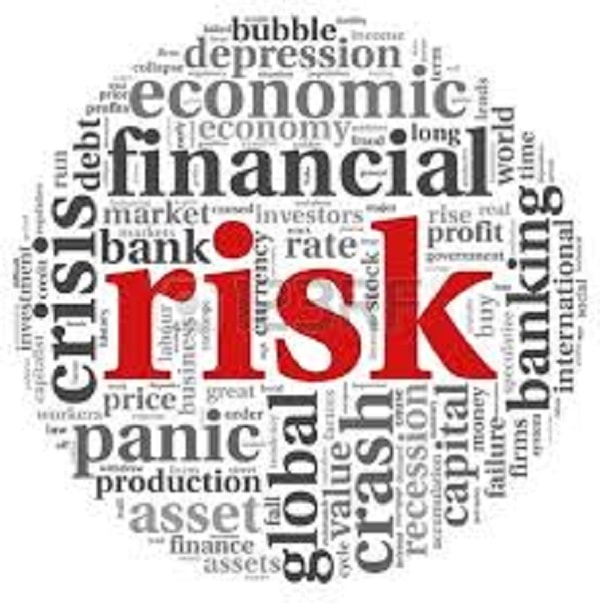Successful sales efforts are rarely improvised. And for a few companies sales strategies basically consist of throwing random tactics against the wall to see what sticks. What they fail to realize, however, is that businesses that consistently achieve sales success, in general, provide some level of guidance to their salespeople. A structured progression serves as a reference point for salespeople, providing a disciplined framework that tells them what to do next. A sales cycle is a term used to describe this infrastructure. We’ll learn what a sales cycle is, how to recognize the steps and stages that make up one, and how to put one in action efficiently.
What is a Sales Cycle?
A ‘Sales Cycle is a series of steps or stages that salespeople follow in order to close a new account. Sales cycles are frequently mistaken with sales processes, which are frameworks for putting sales cycles into action. The sales cycle is more tactical, with steps and stages like “prospect,” “connect,” “research,” “present,” and “close.”
Having a sales cycle in place is in your company’s best interests. It helps you organize your sales funnel, prioritize leads, and assess the effectiveness of your sales activities.
A well-defined sales cycle provides your reps with a detailed roadmap and common reference points to guarantee that they and their peers are on the same page. A sales team’s cohesion is crucial.
Salespersons must be able to pick up where another left off if necessary. However, if there is no sales cycle to drive their efforts, there is no telling “where they left off.” These possible scenarios will help you understand the steps and stages of a sales cycle better.
A sales cycle further provides the foundation for salespeople to prioritize leads and determine how far along their prospects’ buyer’s journeys they are. They’ll know how to approach the leads they’re pursuing if they can figure out where they are in the sales cycle.
Finally, a sales cycle allows you to analyze your sales efforts objectively. How did your sales reps fare? What did they find to be effective? What went wrong and what went right? Did they stray from the pattern? What would happen if they succeeded?
Why Sales Cycle Steps and Stages are Important?
For the most part, businesses always need to keep track of the length of their sales life cycle to ensure that their selling process is efficient. The majority of marketing teams are aware that they follow a similar sales cycle. However, few of them outline and systematize the cycle, leaving it up to individual sales representatives to decide which actions to take and when.
Keeping track of the entire sales cycle gives a business insight into how effective its sales processes are. The length of these processes can be tracked, examined, and compared to the industry standard length. If your sales cycle is shorter than the industry average, it could indicate that your sales team is more productive than your competitors.
Furthermore, by analyzing your sales cycle, you can see which steps are taking longer and work to improve them. When you look at the process of completing deals step by step, it’s easy to see which behaviors lead to success or failure.
Stages and Steps of the Sales Cycle
Every business has a sales cycle, and each one is different. However, there are a few stages that the vast majority of them follow. The sales cycle is started when leads generated by your marketing automation solution are transferred to your sales team. On the other hand, some businesses combine inbound and outbound sales methods, which may include cold calls, emailing, door-to-door visits, and more.,
in any case, you must first identify your sales cycle stages and develop essential indicators to assess your team’s performance at each level.
But again, the stages of the sales cycle might vary depending on the following factors:
- The business you’re in
- The market share of your business
- The kind of product or service you provide
Bryce Sanders, President of Perceptive Business Solutions, summarizes the first step in determining your sales cycle:
He declares,
“It’s simple to find out your own method. Let’s pretend it’s a face-to-face deal. Talking to someone is the first step. Getting in front of them is the next stage. You gather facts and then make a proposal in the financial services industry. The data collection could be done in the second stage. Returning with a proposal and presenting it is the third phase. When they move from prospect to client, the fourth stage is to ask for the order. That’s an oversimplification, but it’s a basic approach [for devising your own]. “
Let’s dive in without further ado…
#1. Prospecting
The sales cycle begins with prospecting.
The first step is to create and stick to an ideal customer profile (ICP). Create a new one if you don’t already have one. This essentially provides information on the possible clients you’d like to contact as well as how to contact them. Include details such as their personal history and pain spots. This will enable you to search for characteristics other than demographics, interests, or affiliations.
After that, come up with a phrase to describe your leads. Some firms refer to interested leads as “prospects,” while others simply refer to them as “leads.” Then categorize the people you think would be interested in your company as “likely” or “probable.” The terminology you choose is determined by your firm and your personal preferences.
This step may appear to be comparable to lead generation. In reality, there’s a lot more to it. Lead generation only collects your leads’ contact information, whereas sales prospecting involves actually reaching out to these leads and determining whether or not they are interested in your organization.
#2. Establishing Contact
Once you have a continuous stream of leads, you can start contacting them. However, before you select how you want to approach them, you’ll need to examine them and figure out where they are in the buyer’s journey.
Let’s say your lead has provided you with their contact information in exchange for an eBook download. They may not be looking to buy at this time since they are gathering additional information on how to tackle their pain points on a basic level. In this scenario, reaching out to them via email and nurturing them is critical before calling them or attempting to set up an in-person encounter.
What if your lead has requested a price or a product demonstration by filling out a form on your website?
This is a clear indication that they’re ready (or almost ready) to buy, and it’s a good idea to call them.
In any case, you must contact your leads as soon as possible. According to statistics, 30-50 percent of sales go to vendors that contact prospects first. Allow that to sink in. And this does not suggest that you can respond to your leads within 24 hours; that simply will not suffice. You should call them back as quickly as possible to increase your chances of converting the lead into a paying customer.
Don’t be concerned if your leads don’t return your calls. Getting a lead on the phone normally takes 8 to 12 attempts, so keep trying.
While we know that the optimum times to call prospects are between 4 and 6 p.m. on Wednesdays and Thursdays, attempt to vary your timings as well. You won’t get through to your leads if their Wednesday afternoons are dedicated to weekly strategy sessions, no matter how hard you try.
#3. Qualifying the Lead
The next step is to qualify your lead after you’ve established contact with them. Are they a good fit for your company? Is your company prepared to meet their needs, and vice versa?
In the previous step/stage of the sales cycle, you may have done some pre-qualifying.
For example, your webform could have fields like firm size or annual sales. If they haven’t provided this information, you can find it by searching their company on LinkedIn or Crunchbase.
After that, if you’re confident that your lead meets your ICP and is ready to buy, give them a discovery call to learn more about their wants and pain issues.
If they don’t, ask them a few questions to see if they fit within your typical customer profile. Several businesses employ the BANT (budget, authority, need, and time) model.
You can ask your leads the following questions:
- What is their financial situation?
- Precisely what is the title of their position? This is to see if they have the authority to make a purchase or if they are doing research on behalf of someone else.
- What are their problems and requirements? After that, consider whether your product meets all of these requirements.
- What is the urgency with which they require your product?
Getting a sense of your lead’s budget is especially critical for companies with high-priced products or services. You don’t want to spend three months developing a lead only to discover that they don’t have the financial means to buy from you.
#4. Nurturing the Lead
If your lead isn’t ready to buy right away, nurture them to help them progress through your sales funnel.
Companies frequently make the mistake of attempting to “force” a sale. Anyone can sell, and in most cases, your prospects do not want to be sold thus close to the conclusion of the consideration stage. Your prospects simply want to be treated as individuals rather than just another number on the list of people you’re selling to.
They are, after all, the ones who make the decisions. So go ahead and provide the relevant resources like eBooks, articles, or case studies that can assist them in making a decision rather than pushing them. You can do this by creating email campaigns to ensure that these resources arrive in their inboxes on time. You can also use Google, Facebook, and LinkedIn advertisements to reach out to them.
#5. Making an Offer
By this point, your prospect should have visited your pricing page or, if you’re lucky, signed up for a free trial of your product. They’re demonstrating their intent to buy by doing so.
Consider the following:
If they sign up for a demo, show them your product and discuss their problems and issues, as well as how your product may help them.
You’d know how they’re using your product if they signed up for a trial. Make a relevant and targeted offer once you’ve presented your product to them.
#6. Handling Objections
The ball is in your lead’s court once you’ve made your offer. There’s a risk they’ll push back and raise one or more objections against you, such as:
- “Right now, it’s not a priority for us.”
- “We’re also looking at your competition and may go with them.”
- “Your product is difficult to understand.”
- “I haven’t heard anything good about your firm.”
- “Some functionalities in your product are missing.”
- “I’ll get back to you as soon as possible.”
- “Right now, I don’t want to commit to a contract.”
It’s your responsibility to deal with these issues and persuade them that working with you is the best option for them.
If your lead complains that your product’s price is too high, perform the arithmetic and explain how much return-on-investment (ROI) your product will provide (or how much money it will save them).
Tell them about what your business can offer in terms of setup and training, as well as your easy-to-use support channels if they’re concerned about getting their employees to accept new technologies.
#7. Closing the Sale
It’s now time to close the transaction once you’ve dealt with your lead’s objections.
After you’ve double-checked that all of the documentation and documents are in order, ask your lead a final question. Find out when the best time is to put your plan into action. A straight approach is what this is called.
If they aren’t responding because of last-minute changes to their plans or other situations, take a gentler approach. Reiterate how the product can assist them to solve their problems and give them the case study again to show them the real-world benefits your solution can provide.
The way you approach your lead is also determined by his or her personality. By now, you should have a decent read on this person, which will help you determine if a direct or soft approach will be more effective.
What happens after you’ve completed the transaction? Your sales agents may be so delighted to have closed the deal that they rush to conclude the meeting and leave as quickly as possible, believing that this will eliminate the potential of the lead changing their mind. However, you should not conclude the meeting abruptly; instead, give your leads the opportunity to ask any final questions and walk them through some of the following stages.
If you’re having a face-to-face meeting, give your lead a business card so they can contact you if there are any concerns. You might also ask them to refer you to folks who are facing similar problems.
How Can You Optimize Your Sales Cycle Steps and Stages?
Whether your sales team is already exceeding its revenue goals or still has a long way to go, they should fine-tune their sales strategies to shorten the sales cycle.
Dacre, Inc.’s Senior Instructional Designer, Daina Dunlop, says,
“To figure out what’s happening or not, you’ll have to examine each stage as well as your sales statistics. In terms of optimizing it, that’s something that’s unique to your firm, and you’ll have to go through it step by step to figure out what has to be done differently. In my experience, the problem isn’t always with the sales process (or sales cycle), but rather with sales reps who aren’t executing it successfully. I recommend that you perform this type of analysis to figure out what’s going on with yours.”
Here are a few pointers to remember.
#1. Reduce Low-Value Work
The average sales representative spends just 37% of their time selling, with the rest consumed by low-value jobs such as administrative and service labor.
Outsourcing your reps’ administrative duties, such as data entry, scheduling, and even lead generation activities, is a simple method to optimize your sales cycle.
These activities can be outsourced to support your salespeople and enable them:
- Concentrate on selling.
- Increase your sales efficiency and effectiveness.
- Give you additional options for advancement from a business aspect.
You might also utilize a customer relationship management system for this. For starters, it was created for this purpose. It also consolidates consumer data from different touchpoints, such as phone, email, chat, and web forms, and keeps track of records without the need for user intervention.
#2. Align Sales With your Marketing Team
It’s straightforward. There are numerous advantages to aligning your company’s sales and marketing departments. According to MarketingProfs, doing so can result in a rise of 36 percent of client retention and a 38 percent boost in sales wins.
- When your sales and marketing teams work together, you can effectively:
- Optimize your sales cycle, and you’ll be able to go to market sooner.
- Harmonize your segmentation, targeting, content, nurturing, closing, and customer service
- Increase sales and achieve the ideal ROI
- Track and measure the impact of these two teams working together using your sales and marketing tools,
You can also utilize a CRM system that has marketing automation capabilities built-in or can integrate with one. This can significantly optimize your sales cycle step and stages. You may have a consistent approach to data management by using a CRM, and it also offers you access to your lead’s activity timeline, including whether they’ve read emails, visited pages, and more, giving your sales and marketing teams additional information.
#3. Follow Up Diligently
Getting in touch with your lead for the first time is merely the beginning. While this is a success in some ways, you will still need to concentrate on following up with your lead, which may be a time-consuming process.
Surprisingly, while 80 percent of salespeople say they need five follow-ups before closing a contract, 44 percent abandon up after the first effort. This means that your salespersons will have to grow thick hides and stick to their follow-ups.
Adopt an effective follow-up plan that works for you to deal with this. You can try following up as many times as you like until you receive an answer. This does not imply that you must continue to press them for a sale.
Your lead, for example, may request that you contact them in 15 or 20 days. Don’t be disappointed; write it down on your calendar and contact them on their preferred date.
Reduce the number of follow-ups if you’re contacting someone for the first time. Sending repetitive emails to someone you haven’t spoken to in a long time is the worst.
Another thing you may do is provide them with useful content or knowledge. The rationale is simple: it eliminates the repetitious nature of your follow-ups totally. Share a variety of content with them so it doesn’t appear as if you’re just looking for a sale; rather, you’re sincerely attempting to help them solve their problems.
#4. Request for Small Commitments
Do you know what the “foot in the door” strategy is? This is also called “incremental closing,” when you ask for a tiny favor from the prospect at the end of each call. The amount of requests you can make is defined by their willingness to commit to a certain number.
Actually, the more demands your lead agrees to, the more rapport you build, and when it comes time to clinch the deal, it won’t seem so difficult.
Start small and make it easy for your lead to say yes with these small commitments.
For example, you might ask for their phone number on your first interaction with them so that you can contact them more readily.
After that, you can share some content with them and ask them to go over it.
Then inquire about the decision-maker with them.
Request that they present you to the budget authority or their procurement team once you’ve aced the demo.
Close the sale after this call.
#5. Eliminate the Hassle of Scheduling Meetings
No lead has ever remarked, “I adore sending many back-and-forth emails to plan a meeting.” This is both inconvenient and ineffective.
This may not appear to take much time, but it does. For example, if it takes you and your prospect a quarter of a day to agree on a convenient meeting time, and your sales cycle calls for eight meetings, your sales cycle is too long. This means you’ll have to waste two days simply to make a phone call.
Use a service that makes scheduling meetings easy, such as Calendly or Meetings, to streamline your workflow and eliminate the friction associated with the sales cycle. These tools integrate with your official calendar, allowing prospective prospects to see when you’re available and choose a time that suits them.
#6. Use Social Proof
You may have a number of case studies on hand, but you should not simply post them on your website and forget about them. It’s useless if your prospects can’t find it readily. And not all of them are capable.
Case studies are an excellent way to increase your company’s social proof, so make sure your salespersons are actively sharing them with prospects. This will help them get one step closer to completing a purchase.
Case studies are also a wonderful approach to deal with any objections your lead may have. For example, if your lead is concerned about whether your solution will have a high learning curve, show them case studies of other customers who were up and running in a short time after installing your tool.
#7. Train Your Team
SDRs can apply various best practices to improve their sales effectiveness, as we’ve discussed. This final tip focuses on how sales managers and directors may assist their teams in improving by ensuring that their salespersons receive adequate training.
To guide your team through the sales process, create sales decks, sales kits, and other collateral. Of course, you won’t be able to make all of them. Request that your marketing department produce it for you. You can also keep track of each team member’s stats as they become more familiar with your sales cycle.
You may discover that particular reps are having challenges at different points of the sales cycle as a result of this. If this is the case, make sure you provide them with additional resources and assistance, as well as opportunities to learn from top-performing salespeople.
Sales Cycle Management
Sales cycle management is the practice of keeping track of each stage of the sales process by salespeople, managers, and executives. They spot patterns and figure out which phases of the process are working well and which ones need to be tweaked.
If you’re a salesperson or a sales manager, sales cycle management helps you to assess the many stages of the sales cycle and determine where changes or adjustments are needed. Sales cycle management is aided by tools such as CRM.
Every salesperson’s day revolves around sales cycles. It’s critical to understand your team’s sales cycle and to utilize it as a compass to navigate the tempest that is selling.
In Conclusion
A complete sales cycle is incredibly beneficial because it organizes your sales procedure, stages, or steps and allows you to keep track of everything. It maintains the security of your plans while also highlighting any flaws. A sales cycle is a measurement of how far you’ve advanced toward your sales objectives. Furthermore, as a result of this, you’ll always know how many leads are at each stage of your sales funnel.
Sales Cycle FAQs
What are the 7 steps of sales process?
The following are the 7 steps of the sales process;
- Prospecting.
- Preparation.
- Approach.
- Presentation.
- Handling objections.
- Closing.
- Follow-up.
What is the sales cycle in business?
The sales cycle refers to the steps that a company takes to sell a product to a consumer. It includes all activities related to the sale’s conclusion. Depending on how they define the sales cycle, many firms have distinct processes and activities.
Related Articles
- The Product Life Cycle Theory: Guide to the Stages & Examples
- Selling Leads: Best Easy Guide For Beginners & Pros Online (+ Free Tips)
- What is Forensic Accounting: Overview, and How it Works.
- SALES LEADS: How to Generate Sales Lead for any Business, Explained!!!
- ACCOUNTING CYCLE: What is Accounting Cycle & All you Need







